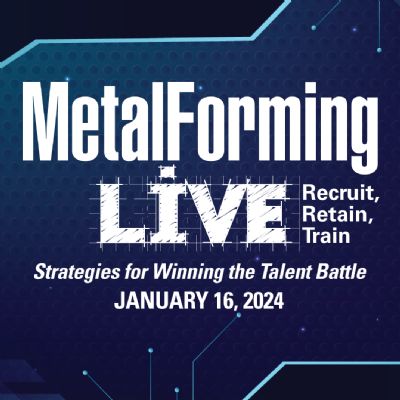 Douglas Ehlke
Douglas EhlkeMajor Citations Reversed When Evidence of Compliance Excluded
July 1, 2017Comments
These two cases illustrate how OSHA administrative-review courts may reverse major citations when evidence of compliance has been excluded.
Case 1
Expert witnesses’ testimony for the employer on the inapplicability of the new crane standards’ separate duties and on technical safety of the operation were taken out of colloquy and admitted.
In an early test of the interpretation of new federal and state OSHA crane standards, the bulk of trial testimony by three standards authors and recognized industry experts was objected to and excluded as evidence by putting it into “colloquy.” Under the new crane-safety standards, worksite employer-supervision responsibilities are separately designated for the lift director, site supervisor, crane owner and operators. When a crane owner leased its crane and operators to a different employer and required by contract for the crane renter customer to supervise the leased operators and crane activities, the crane-owning company, without supervisors on the job, was cited for lift-director and site-supervisor duties related to contacting the utility company and de-energizing powerlines adjacent to the work area.
At trial, the employer presented three experts: two former OSHA agency technical-interpretation and code-enforcement managers and an industry expert who served on OSHA federal and state standards-writing-and-reviewing committees. Their testimony on the safety rule, on industry safe practices, job divisions under the safety rule, exemptions and the compliance of employer safety programs in effect was excluded as irrelevant at trial. On appeal, the reviewing Board Of Industrial Insurance Appeals reversed the decision. In its unanimous decision, the board determined that expert witnesses’ testimonies were relevant and helpful in resolving these type of citation-appeal issues.
In the board’s words:
“We reviewed the testimony of the expert witnesses, Mr. Sicklesteel, Mr. Lemon and Mr. Parker. Their testimony was helpful to the trier of fact in understanding the technical aspects of the crane-assisted lift operation. Mr. Lemon’s testimony aids in analyzing the safety rule. Mr. Parker’s testimony assists in determining facts at issue, specifically whether Sicklesteel was the lift director or site supervisor and thus responsible for contacting the utility company. After carefully reviewing the entire record and considering the arguments of the parties, we conclude that the testimony of Thomas Sicklesteel, Charles Lemon and Robert Parker should be removed from colloquy and admitted as evidence.
“We now turn to the substantive issues in this appeal. We agree with our industrial appeals judge that the department failed to make a prima facie case on alleged violation 1-2 concerning an inadequate safety program, cited as serious under WAC 296-155-110(2). The record establishes that on the date of the alleged violation, Sicklesteel did have an adequate safety program in place. This alleged violation should be vacated.
“We also agree with our industrial-appeals judge that the department failed to make a prima facie case as to the alleged violations 1-1a and 1-1b, which were cited as serious under WAC 296-155-53408(2)(d)(i) and WAC 296-155-53408(2)(d)(ii). But our reasoning differs from the reasons set forth in the Proposed Decision and Order. These allegations addressed employer duties and responsibilities when operating cranes under power lines. Both of these alleged violations were premised on the employer being the lift director and/or site supervisor as defined at WAC 296-155-53401(1).
“Mr. Lemon testified that Service Electric took many steps to ensure their employees’ safety, including developing a lift plan, holding a planning meeting, determining exactly where the energized power lines were, assigning several dedicated spotters, and contacting the utility company and obtaining the exact voltage of the power lines. Mr. Parker explained that the lift director or site supervisor had the duty to contact utility companies, and the lift director’s duties or responsibilities were not applicable to Sicklesteel in this situation. Mr. Sicklesteel explained that a lift director starts by defining the work zone where the crane is going to work and identifying the hazards, such as power lines. Sicklesteel did not create a lift plan for this lift. Here, it is unrebutted and uncontested that Service Electric employee Andy Johnson was the lift director and the site supervisor. In addition, Mr. Sicklesteel testified that no managers or supervisors from Sicklesteel were in attendance at any project safety meetings or were present on the work site when the lift was made.
“Taken as a whole, the record shows that the department failed to prove that Sicklesteel knew, or could have known, of the alleged violative condition of energized power lines. The department also failed to prove that Sicklesteel had actual knowledge because there were no Sicklesteel managers on site, and failed to show that Sicklesteel was responsible for contacting the utility company to arrange for the power lines to be de-energized.
“Sicklesteel was not the lift director or the site supervisor. It did not have responsibility to get power lines de-energized or show that its compliance was infeasible. Sicklesteel had no knowledge on the alleged violative condition. The department failed to establish a prima facie case, and items 1-1a and 1-1b should be vacated.”
Upon this decision, the agency has 30 days to appeal.








 Podcast
Podcast
 Webinar
Webinar